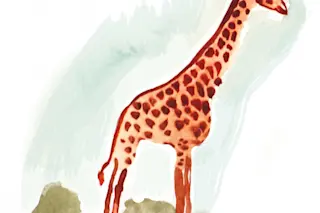The giraffe is in some ways a perfect symbol for evolution: they eat the leaves of tall trees, and they have the longest necks you can imagine as a result. But how has the rest of their body responded to their massive size?
In a rat, things happen quickly, as you can imagine based on their size. They sense and respond to stimuli with the characteristic jerky little movements we’ve all observed. They embody the types of sensorimotor control (an animal’s ability to take in outside information and respond appropriately) that all animals execute in order to survive, and they’re an efficient little package at doing so.
Bigger animals are less so. Nerves must travel longer distances in bigger animals--for instance, each giraffe sciatic nerve, which runs down each of its legs, is several yards long. If nerve signals in the giraffe go only as fast as those in the ...














